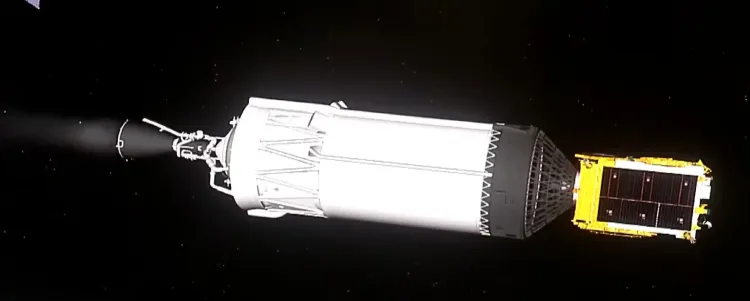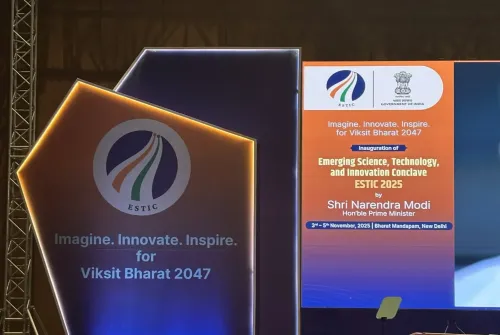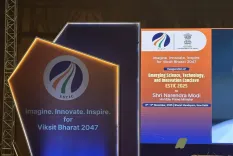How did India's indigenous GSAT-7R satellite successfully enhance Navy communications?

Synopsis
Key Takeaways
- Successful launch of GSAT-7R enhances Indian Navy communications.
- Indigenous technology boosts national defense.
- Satellite weighs approximately 4,400 kg.
- Provides robust coverage across the Indian Ocean Region.
- Improves secure communications for naval operations.
Sriharikota (Andhra Pradesh), Nov 2 (NationPress) The Indian Space Research Organisation (ISRO) has accomplished a significant milestone on Sunday with the successful deployment of the GSAT-7R (CMS-03) communication satellite for the Indian Navy. This advanced satellite is set to enhance the force’s capabilities in space-based communications and maritime domain awareness.
Launched aboard the LVM3-M5 rocket from the Satish Dhawan Space Centre at exactly 5:26 PM, this satellite represents the pinnacle of communication technology for the Indian Navy.
In an update shared via its X account, ISRO stated: "CMS-03 has been successfully separated. Perfect injection achieved!"
Dr. Jitendra Singh, the Union Minister of State (Independent Charge) for Science & Technology, praised ISRO for this remarkable achievement.
"Congratulations to Team #ISRO! India’s #Bahubali ascends to the skies with the successful launch of the #LVM3M5 Mission! Known as 'Bahubali', this rocket carries the CMS-03 communication satellite, the heaviest ever launched from India into a Geosynchronous Transfer Orbit (GTO). ISRO continues to achieve one success after another… A big thank you to PM @narendramodi for his unwavering support," he expressed in a post on X.
The GSAT-7R, weighing around 4,400 kg, is India’s most substantial communication satellite to date, featuring numerous indigenous components designed to fulfill the operational needs of the Navy.
The satellite will offer extensive telecommunication coverage throughout the Indian Ocean Region, equipped with transponders that support voice, data, and video communications across various bands.
This technology will significantly boost connectivity, providing high-capacity bandwidth for seamless and secure communication links between naval assets including ships, aircraft, submarines, and Maritime Operations Centres.
In light of evolving security challenges, GSAT-7R manifests the Indian Navy’s commitment to safeguarding national maritime interests through advanced technology, embracing the principle of Aatmanirbharta.
ISRO noted, "CMS-03 is a multi-band communication satellite offering services over a broad oceanic area, extending to the Indian mainland."
The LVM3 rocket, recognized as India's most potent launch vehicle, is capable of transporting up to 4,000 kg to space. It has successfully facilitated missions such as Chandrayaan-3, which marked India as the first nation to land near the lunar south pole. The LVM3-M5 marks its fifth operational flight.
ISRO detailed that the launch vehicle was completely assembled and integrated with the spacecraft and was transported to the launch pad on October 26 for final pre-launch preparations.
Designed specifically for the Indian Navy, the GSAT-7R will replace the GSAT-7 Rukmini satellite, launched in 2013. With improved payloads, GSAT-7R aims to enhance secure, multi-band communications for the Navy, thereby reinforcing its operational reach across vital maritime territories.
The CMS-03 payload comprises transponders for voice, data, and video communication across C, extended C, and Ku bands.









